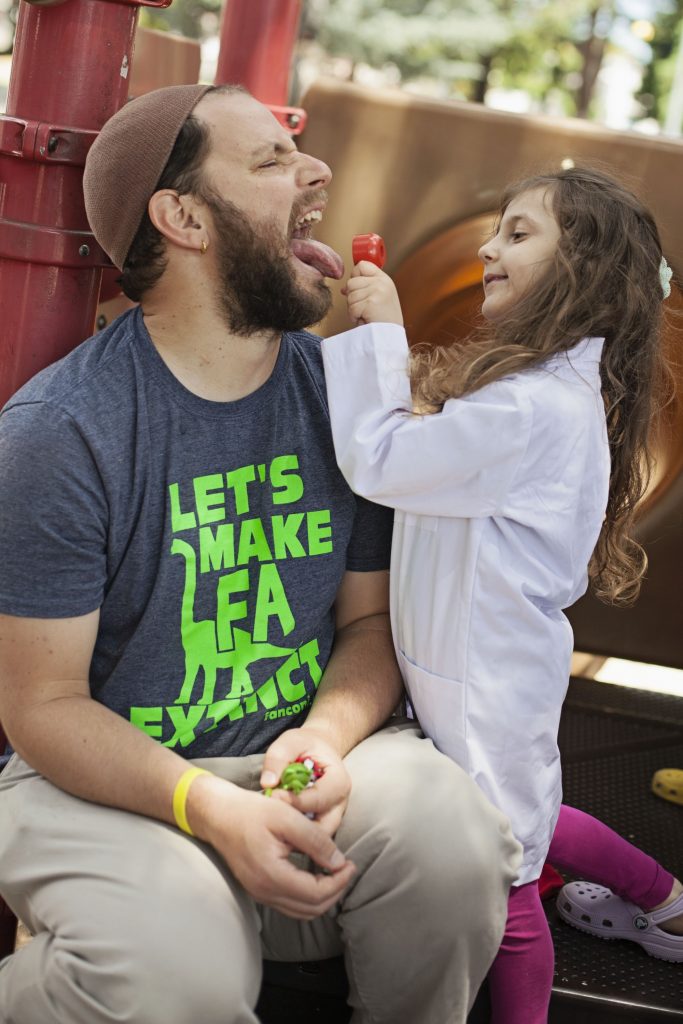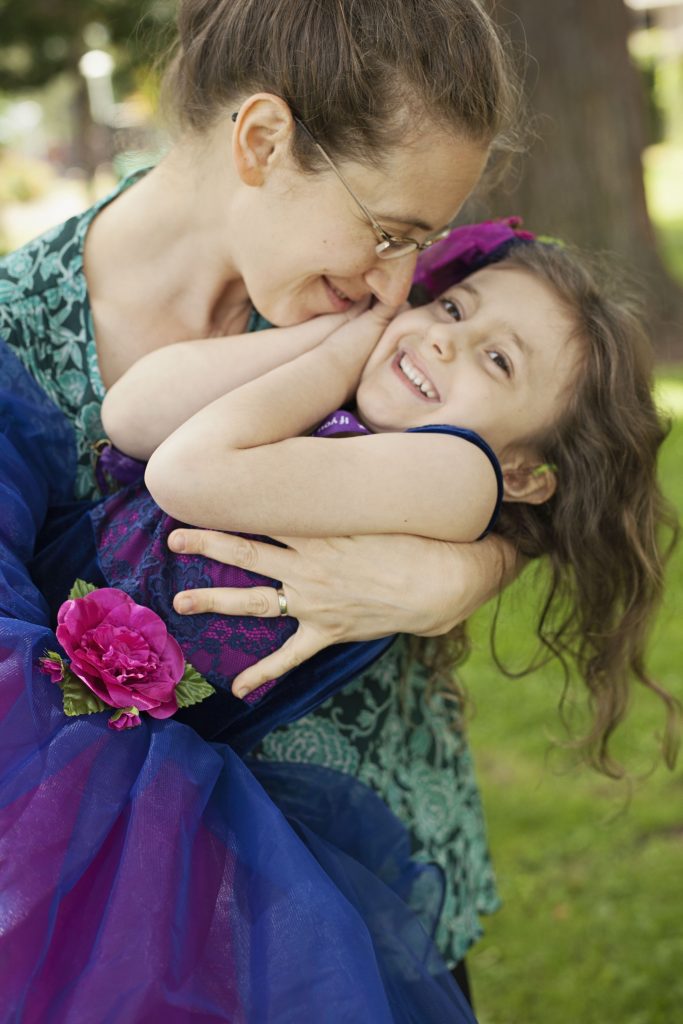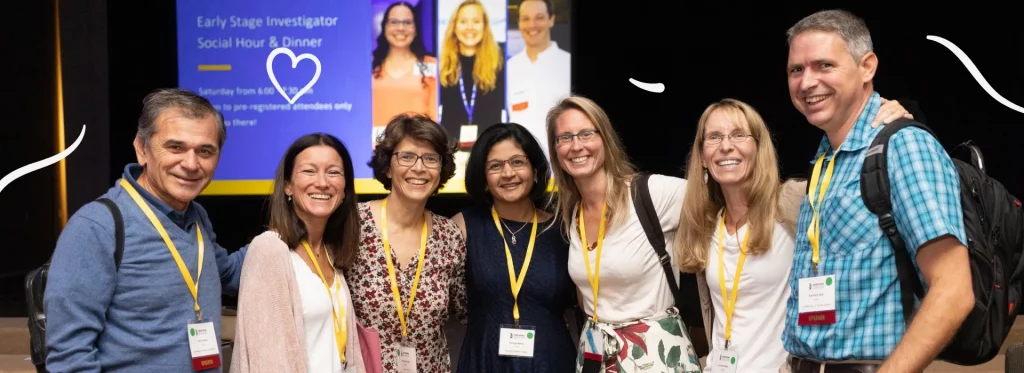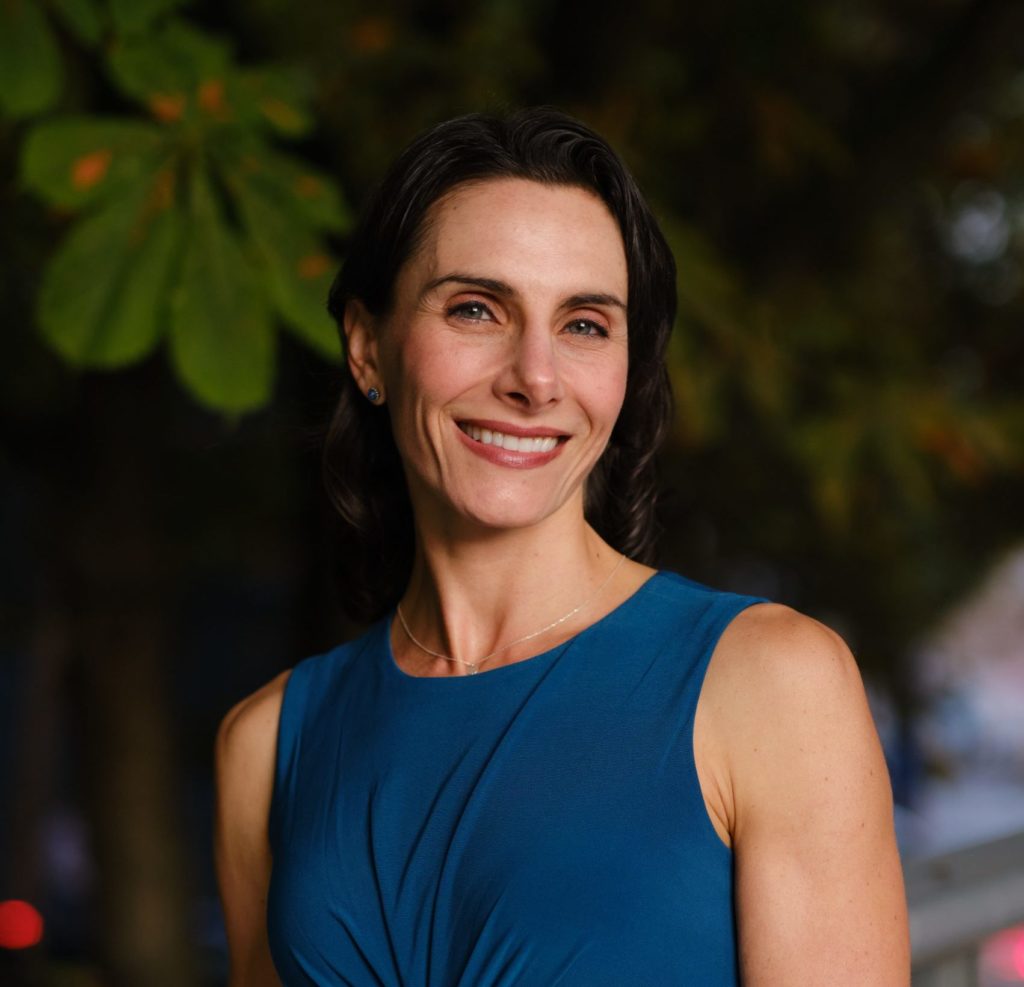Our Mighty Mouse
Well before her diagnosis of Fanconi anemia (FA), our daughter Norah was a model in resiliency for us. Born at just five pounds and three ounces, she had the strongest heartbeat on the hospital floor, surprising us and her doctors. It was a high-risk pregnancy because she wasn’t growing as much as she should have been. In the third trimester, we had to attend non-stress tests several times a week to make sure that Norah was not under any distress. Norah’s mom was scheduled for an induction, much to our chagrin.
Despite all of the doctor’s concerns, Norah was a rockstar. We ended up having an eight-day induction. Though Norah was not quite ready to join us, she showed no signs of ill health. The head OB/GYN even sent us home for 24 hours halfway through the induction.
When she was finally born, we called her Mighty Mouse. Small, but resolute. Our model of resilience. Our firstborn. Our Norah.
The Diagnosis
We received Norah’s diagnosis in stages. She was born with hearing loss that turned out to be progressive in at least one ear. Her doctor was concerned. Progressive hearing loss in children is rare. Progressive loss in one ear, even more so. The pediatrician sent us to get a blood draw (the first of many) and referred us to the genetics department. When the blood tests returned with decreased platelets, we knew something wasn’t right.
We first heard the words “Fanconi anemia” over the phone with our pediatric hematologist/oncologist. Getting the diagnosis sent us into a tailspin. We cried every day for weeks. Norah’s dad immediately regretted a decision he made in college to not take as many science classes. A DNA-repair disorder? We had our work cut out for us.
Bewildered, we started doing our homework. What’s the course of treatment? Who in our communities has expertise in FA? Most importantly, what can we do to take control of our circumstances and best care for Norah?
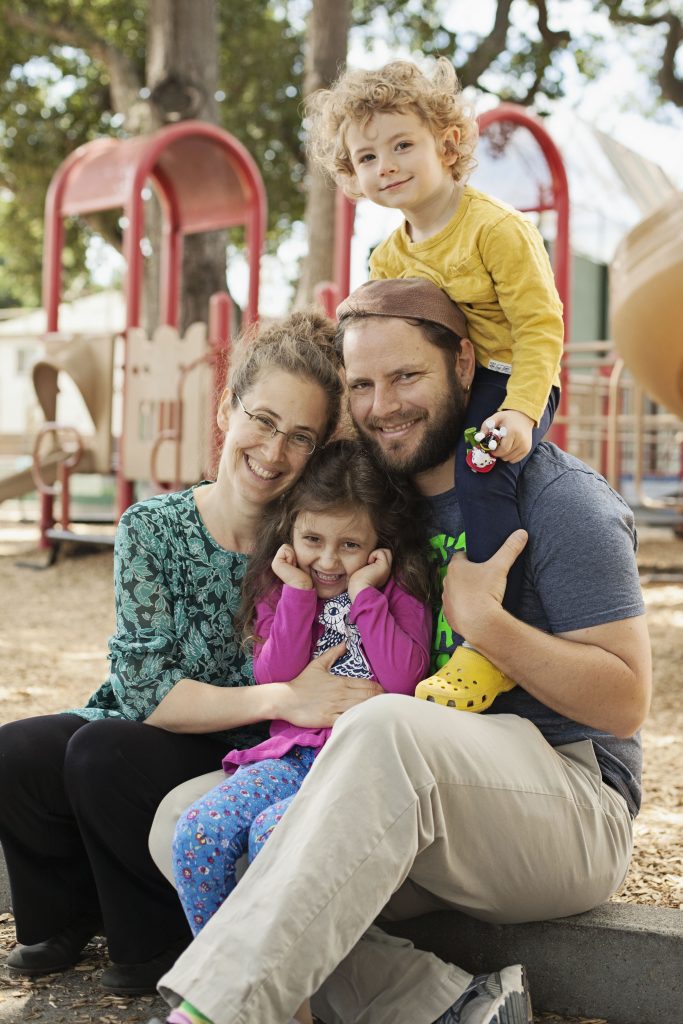
The Gratz-Lazarus Family
And so, with the FA diagnosis in hand, our family started putting the puzzle pieces together. We learned that hearing loss and small stature were related to Norah’s diagnosis, among other challenges. We reached out to the Fanconi Anemia Research Fund (FARF), read what we could stomach and watched videos on cell biology so we had a better sense of what the doctors were discussing. We turned to Norah, our dancer, singer, and bookworm, for help staying present.
Lucky is a challenging word to describe our change of circumstances, but despite our ignorance in cell biology, we felt lucky to have some of the tools we needed to face this challenge head-on. Rachel works in public health doing policy work and has a background in early childhood education, race and health equity issues. Zach has worked in community organizing and as a social worker in community mental health settings. We started taking the bull by the horns: channeling our grief into hope, teaching our children to love themselves, and fighting for life.
The Norah Needs You Campaign
Part of the FA diagnosis is facing the reality that Norah may one day need a bone marrow transplant. When we learned that there were no perfect matches in the bone marrow registries, we reached out to Be the Match and Gift of Life (which specializes in working with Ashkenazi Jewish populations) to build bone marrow donor campaigns. We leaned into our community to host bone marrow drives, connect us with media, and to help publicize the search. Rachel used her incredible skills as an artist to build a website (www.norahneedsyou.com), while Zach reached out to an old friend in the California State Assembly. With the help of State Assemblyman Marc Berman, we passed legislation to encourage people to join the bone marrow donor registry. The work snowballed from there. As of July 2019, we have registered roughly 8,000 people as a part of our Norah Needs You campaign.
Visit the Norah Needs You website
None of this, of course, would have been possible without the tremendous support from our friends, family, co-workers and community at-large. And it has not come without hesitation: we are constantly concerned with the emotional well-being of both of our children (including our three-year-old son Ellis, who does not have FA). Being so public with FA feels scary. And, while being the parents of a child with FA is our story, actually having FA is not. We have robbed Norah, to some degree, of her anonymity in the hopes of finding her a bone marrow match and to help save as many lives as we can. We hope that, with time, this knowledge gives her pride and a sense of meaning.
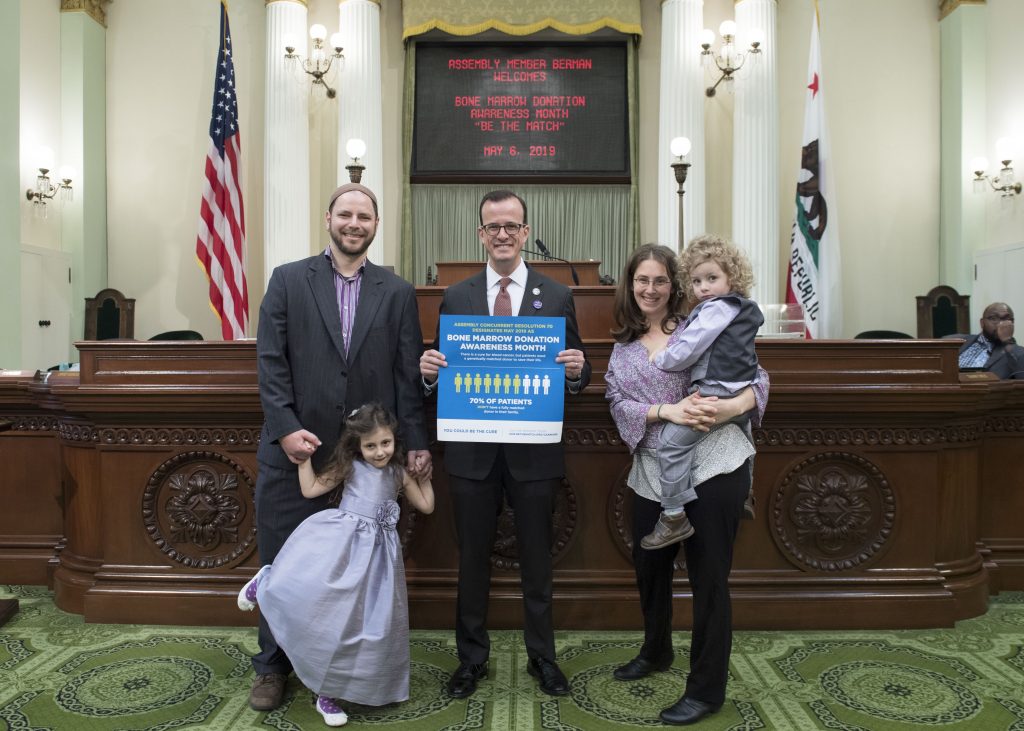
Gene Therapy
Within months after Norah’s diagnosis, we learned about a gene therapy trial that had just opened 25 miles from our house. Our timing was serendipitous. After a series of referrals, we reached Stanford’s gene therapy team just a couple of months shy of the opening date of the trial. Despite the exploratory nature of clinical trials, the team had data from two prior studies that demonstrated both a lack of negative short-term effects and hope for the possibility of avoiding a transplant.
Blessed that the trial was opening, that Norah was eligible, and that there was a spot available, we did our best to make an informed decision. Within months of the diagnosis, we had to make a decision of whether to enroll our daughter in this experimental trial. We needed to talk with the experts. We spoke with doctors at Fred Hutch in Seattle, Cincinnati Children’s Hospital, University of Minnesota, Children’s Hospital of Philadelphia, University of California San Francisco, Dana Farber Cancer Center, and others. Through FARF, we reached out to parents whose children had participated in previous gene therapy clinical trials.
The information we received was overwhelming and confusing: risks unknown, benefits questionable. But, at the end of the day, the level of monitoring was going to be similar whether we went forward with gene therapy or not. Either way, regular blood draws and biopsies were in our future. The question was: would we have hope for improvements? Or simply hope for stability and a slow, albeit expected descent. We voted for hope.
Now, as with everything else, time will tell. All we can do is be honest with our feelings, empowered in our actions, give Norah every tool we can think of, and take one step at a time.
We are so grateful for FARF, the FA families, and donors for all of the incredible work that’s happened over the last 30 years, giving us reasons to hope, ways to connect, and knowledge to share. Thank you.
